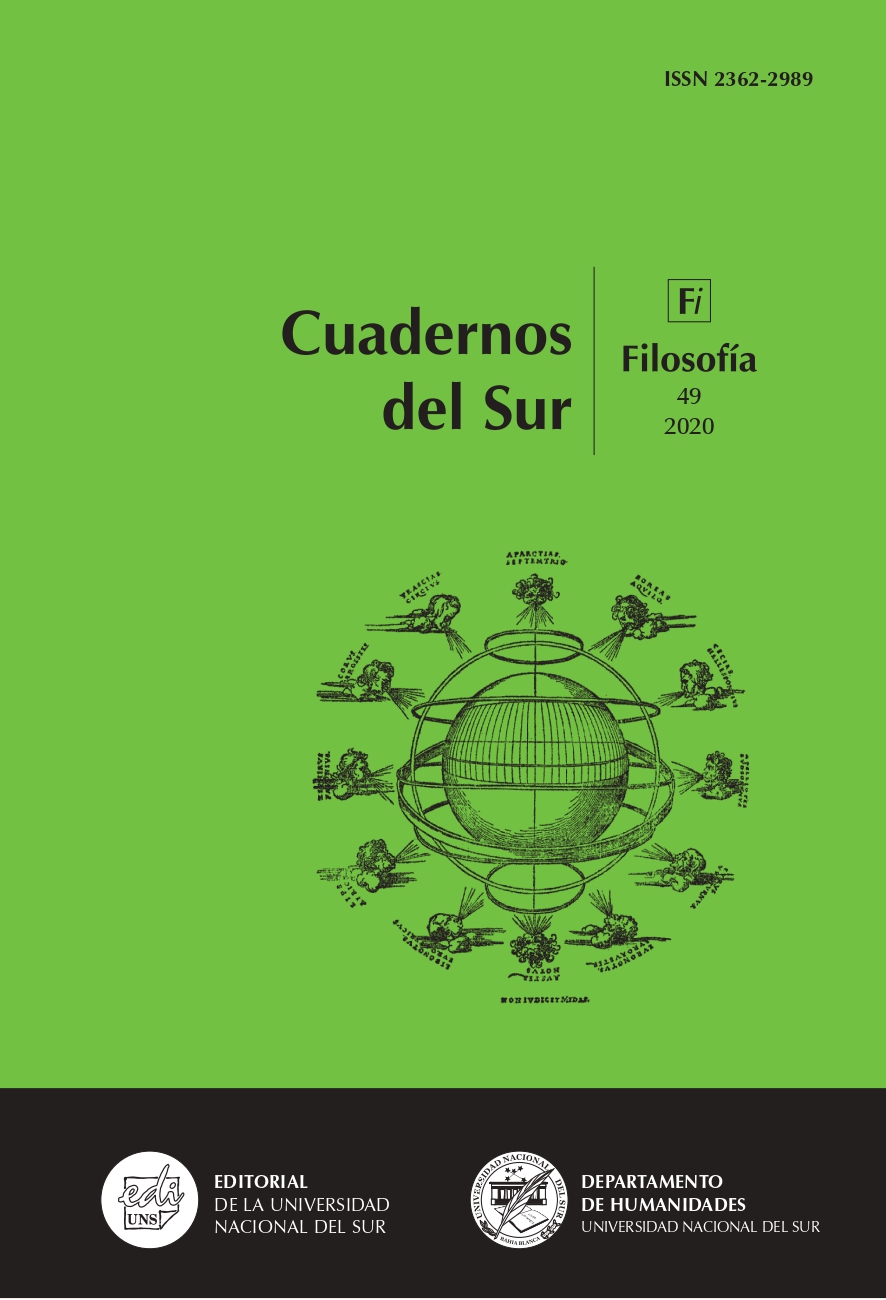Mujeres y máquinas: alianzas políticas en el ciberfeminismo de Sadie Plant
Keywords:
cyberfeminism, women, machinesAbstract
In this writing, we have dealt with the alliance between women and machines as a technopolitical proposal of Sadie Plant’s cyberfeminism developed in the 1990s. In the first place, we have located the emergence of the cyberfeminist account in a context of technological, epistemic and cultural change from where it is possible to understand it as a technological feminism. Second, we have approached Plant’s cyberfeminist proposal, focusing on the conceptual differentiation between classical technologies and new technologies, as the axis of the possibility of a feminist policy based on the identification between women and machines. In this regard, we propose that the appropriation of this identification is primarily an oppositional identification strategy and, as such, constitutes the foundation that reveals the emancipatory option after the cyberfeminist reading of digitization as feminization.
Downloads
References
Haraway, Donna (1995), “Manifiesto para cyborgs: ciencia, tecnología y feminismo socialista a fines del siglo XX”, en Ciencia, cyborgs y mujeres. La reinvención de la naturaleza, Madrid, Ediciones Cátedra, pp. 251-311, [1991].
Old Boys Network (2019), “100 anti-tesis”, en Zafra, Remedios y López-Pelliza, Teresa (eds.), Ciberfeminismo: de VNS Matrix a Laboria Cuboniks, Barcelona, Holobionte Ediciones, pp. 241-243, [1997].
Plant, Sadie (1996), “Feminisations. Reflections on women and virtual reality”, en Hershman Leeson, Lynn (ed.), Clicking in. Hot links to digital culture, Seattle, Bay Press, pp. 37-38.
----- (1997), Zeros and ones: Digital women and the new technoculture, Londres, Harpers Collins.
----- (2000), “On the matrix: Cyberfeminist simulations”, en Kikup, Gill et al. (eds.), The gendered cyborg: A reader, Londres, Routledge, pp. 325-336, [1996].
----- (2019), “Los telares futuros: tejedoras y cibernética”, en Zafra, Remedios y López-Pelliza, Teresa (eds.), Ciberfeminismo: de VNS Matrix a Laboria Cuboniks, Barcelona, Holobionte Ediciones, pp. 145-168, [1995].
VNS Matrix (2019), “Manifiesto ciberfeminista para el siglo XXI”, en Zafra, Remedios y López-Pelliza, Teresa (eds.), Ciberfeminismo: de VNS Matrix a Laboria Cuboniks, Barcelona, Holobionte Ediciones, p. 53, [1991].
Bergermann, Ulrike (2019), “Pulse X (Manifiesto N°372)”, en Zafra, Remedios y López-Pelliza, Teresa (eds.), Ciberfeminismo: de VNS Matrix a Laboria Cuboniks, Barcelona, Holobionte Ediciones, pp. 67-69, [1998].
Braidotti, Rosi (2015), Lo posthumano, Barcelona, Editorial Gedisa.
Gibson, William (2001), Neuromante, Barcelona, Ediciones Minotauro.
----- (2002), Quemando cromo, Barcelona, Ediciones Minotauro.
Derechos Digitales (2017), “Latin America in a glimpse. Género, feminismos e Internet”, Internet Governance Forum 2017, [disponible en https://www.derechosdigitales.org/wp-content/uploads/glimpse2017_spa.pdf].
Hester, Helen (2019), “Después del futuro: una hipótesis sobre el post-ciberfeminismo”, en Zafra, Remedios y López-Pelliza, Teresa (eds.), Ciberfeminismo: de VNS Matrix a Laboria Cuboniks, Barcelona, Holobionte Ediciones, pp. 401-411.
Irigaray, Luce (2009), Ese sexo que no es uno, Madrid, Ediciones Akal, [1977].
Pitts, Walter y McCulloch, Warren (1947), “How we know universals the perception of auditory and visual forms”, The Bulletin of mathematical biophysics, vol. 9, n° 3, pp. 127-147.
Rodríguez, Pablo (2019), Las palabras en las cosas. Saber, poder y subjetivación entre algoritmos y biomoléculas, Buenos Aires, Cactus.
Rosenblatt, Frank (1957), The perceptron, a perceiving and recognizing automaton, Technical report n° 85-460-1, Nueva York, Cornell Aeronautical Laboratory.
Sandoval, Chela (1984), Dis-illusionment and the poetry of the future: the making of oppositional conciousness,Trabajo de doctorado, Berkeley, University of California.
Torrano, Andrea y Fischetti, Natalia (2020), “Filosofía feminista de la técnica y la tecnología. Notas para una academia latinoamericana activista”, Pensando. Revista de Filosofía, vol. 11, nº 23, pp. 54-67.
Vergés Bosch, Nuria (2013), “Teorías feministas de la tecnología: evolución y principales debates”, Repositorio digital Universitat de Barcelona, [disponible en http://diposit.ub.edu/dspace/handle/2445/45624].
Wajcman, Judy (2006), El tecnofeminismo, Valencia, Ediciones Cátedra.
How to Cite
Issue
Section
License
Copyright (c) 2022 Aldana D'Andrea

This work is licensed under a Creative Commons Attribution-NonCommercial 4.0 International License.
Aquellos autores/as que tengan publicaciones con esta revista, aceptan los términos siguientes:- Los autores/as conservarán sus derechos de autor y garantizarán a la revista el derecho de primera publicación de su obra, el cuál estará simultáneamente sujeto a la licencia Atribución-No Comercial 4.0 Internacional CC BY-NC 4.0.
- Los autores/as podrán adoptar otros acuerdos de licencia no exclusiva de distribución de la versión de la obra publicada (p. ej.: depositarla en un archivo telemático institucional o publicarla en un volumen monográfico) siempre que se indique la publicación inicial en esta revista.
- Se permite y recomienda a los autores/as difundir su obra a través de Internet (p. ej.: en archivos telemáticos institucionales o en su página web) una vez publicado su trabajo, lo cual puede producir intercambios interesantes y aumentar las citas de la obra publicada. (Véase El efecto del acceso abierto).










